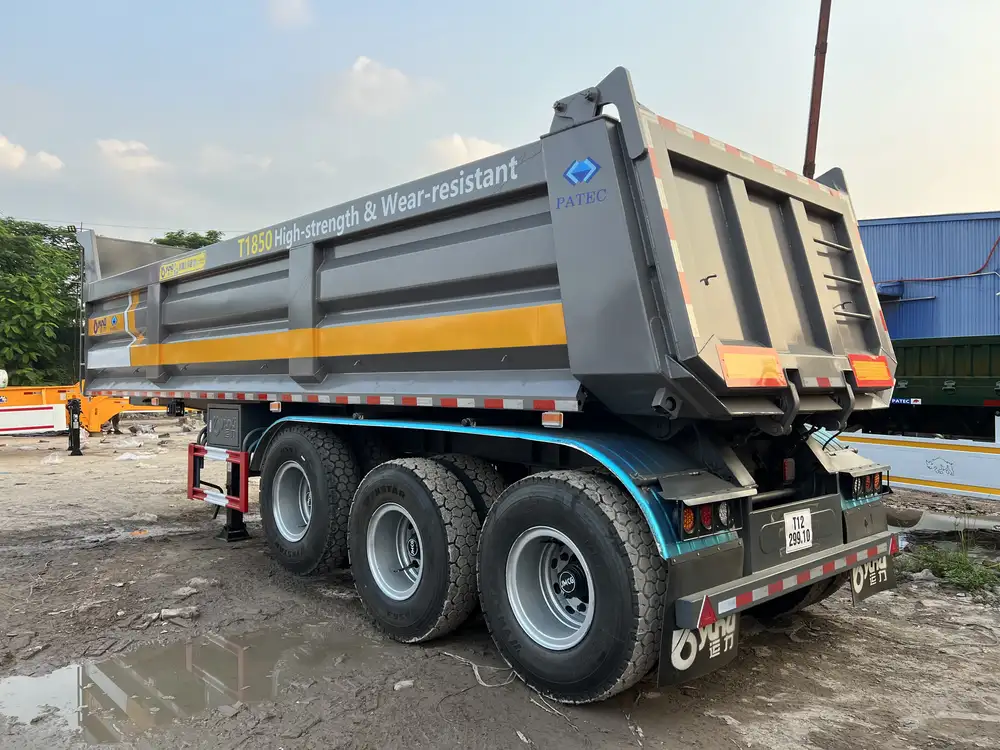When considering the logistics and economics of trucking, understanding the weight of semi trucks and trailers, especially when they are empty, is critical. This information aids in planning, vehicle specification, legal compliance, and operational efficiency. In this article, we explore the various aspects of how much a semi and trailer weigh empty, providing insights that can help optimize your fleet management strategies.
The Basics: What Is a Semi Truck and Trailer?
A semi truck, also known as a tractor, is the powerful front part of a semi-trailer combination, whereas the trailer is the interchangeable cargo unit that rests on the rear of the truck. Together, they are essential in transporting goods across various distances. A full understanding of their weight dynamics is crucial for various stakeholders in the industry, including manufacturers, fleet owners, and logistics coordinators.
Typical Weights: Semi Trucks and Trailers
Empty Semi Truck Weight: The weight of an empty semi truck typically ranges between 15,000 and 25,000 pounds (approximately 6,800 to 11,340 kilograms). The exact weight can depend on the model, engine specifications, and additional features such as sleeper cabins.
Empty Trailer Weight: An empty trailer usually weighs between 5,000 and 15,000 pounds (around 2,268 to 6,804 kilograms). The weight varies based on the type of trailer, including flatbeds, reefers (refrigerated trailers), and tankers.

Combined Weight
When considering the total weight of a semi truck and trailer when empty, the range can be from 20,000 to 40,000 pounds (approximately 9,072 to 18,144 kilograms). This combined weight is significant when planning loads and understanding legal weight limits for various jurisdictions.
Factors Influencing Empty Weights
1. Type of Truck
Different truck models have varying characteristics, which directly affect their weight. For example:
| Truck Type | Average Empty Weight (lbs) | Notes |
|---|---|---|
| Day Cab | 15,000 – 20,000 | Lighter than sleeper cabs. |
| Sleeper Cab | 20,000 – 25,000 | Additional weight from sleeping quarters. |
| Heavy-Duty Truck | 20,000 – 25,000 | Designed for high-capacity hauling. |

2. Type of Trailer
The trailer type also influences its weight. Below is a comparative analysis:
| Trailer Type | Average Empty Weight (lbs) | Characteristics |
|---|---|---|
| Flatbed | 5,000 – 7,000 | Minimal weight due to open structure. |
| Refrigerated | 12,000 – 15,000 | Heavier due to insulation and refrigeration systems. |
| Tanker | 10,000 – 15,000 | Weight varies with capacity (e.g., 5,000 to 11,600 gallons). |
3. Materials Used
The materials that comprise the truck and trailer significantly dictate their weight:
Steel vs. Aluminum: Vehicles made from aluminum can be lighter, improving fuel efficiency without sacrificing structural integrity.
Tires: The size and type can also contribute to the overall weight, with larger, more robust tires typically weighing more.
4. Equipment and Specifications
Additional equipment, such as:
- Hydraulic lift gates
- Toolboxes
- Specialized hooks and connections
Each adds weight and affects the vehicle’s overall empty weight.

Regulatory Considerations: Weight Limits
In many regions, there are strict regulations governing the maximum allowable weight for trucks and trailers on public roads:
Gross Vehicle Weight Rating (GVWR)
This figure represents the maximum weight a truck and trailer can safely carry, including the vehicle itself, passengers, cargo, and any additional equipment. Exceeding this limit can lead to fines, increased maintenance costs, and decreased safety.
| Weight Limit | General Regulation |
|---|---|
| Federal Limit | 80,000 lbs (in the U.S.) |
| State Variations | Some states allow more for certain vehicles. |
Importance of Managing Weight
Managing the weight of a semi truck and trailer is vital for:
- Safety: Overloaded vehicles can lead to accidents and unsafe driving conditions.
- Fuel Efficiency: Lighter loads improve fuel economy.
- Maintenance: Excessive weight can lead to faster wear and tear on vehicles.

Optimizing Fleet Management Through Weight Awareness
Understanding the empty weight of semi trucks and trailers is not just an administrative exercise; it can lead to tangible benefits in logistics management and cost savings.
How to Better Manage Weights
Regular Weighing of Vehicles: Implement a regular weighing schedule at certified weigh stations to ensure compliance with regulatory limits.
Utilizing Weight Monitoring Technology: Integrate weight sensors into your fleet management system for real-time monitoring.
Driver Training: Educate drivers on the importance of load distribution and weight management.
Efficient Route Planning: Use weight data to plan routes that minimize stops and delays, ensuring timely deliveries while adhering to weight regulations.
Load Optimization: Maximize cargo load without exceeding weight limits by leveraging weight distribution strategies.
Frequently Asked Questions

1. How is the weight of empty trucks and trailers measured?
The weight can be accurately measured using certified public weigh stations that provide weight certificates essential for transportation compliance.
2. What are the consequences of exceeding weight limits?
Exceeding weight limits can result in fines, increased costs due to repairs and maintenance, and higher insurance premiums. Additionally, it poses significant safety risks.
3. Do different states have different regulations regarding weight limits?
Yes, states can impose their own regulations that may differ from federal guidelines, particularly for special vehicles and permits.

4. How can I calculate the weight of my loaded truck and trailer?
To calculate the loaded weight, simply add the weight of the truck, the trailer, and the cargo all together. Many onboard systems can assist with this calculation.
Conclusion: The Crucial Role of Weight Awareness in the Trucking Industry
Understanding how much a semi and trailer weigh empty is fundamental in the trucking industry. It has far-reaching implications for operational efficiency, cost containment, and safety compliance. By focusing on weight management—understanding the nuances of vehicle types, materials, equipment, and regulatory frameworks—you position your fleet for success in an increasingly competitive landscape. Whether you are a manufacturer, fleet manager, or logistics coordinator, prioritizing weight knowledge can lead to informed decision-making and enhanced performance, ultimately improving the bottom line.



